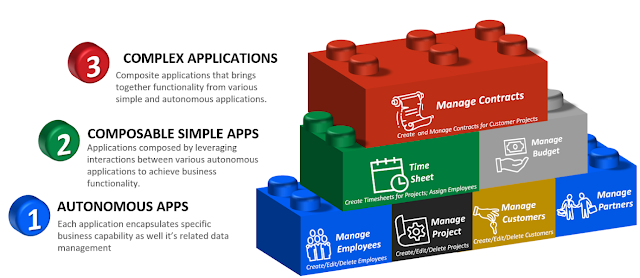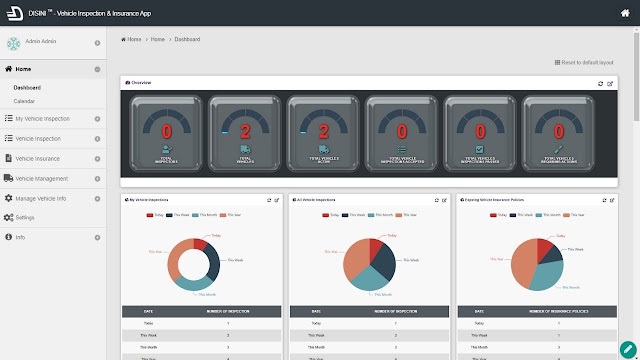Composable Business Applications Using Joget - Low Code
This is a guest post by Anshul Saxena. He is currently working with Mokxa Technologies as a Program Manager with more than 15 years of experience in various domains that include Finance, Banking and Healthcare. He has worked with many Fortune 500 companies across the United States providing innovative digital assets and customer-centric solutions. He is actively contributing in digital transformations, delivering state-of-the-art IT solutions & helping customers in their rapid growth through the adoption of composable architecture.
Centralized Applications As Bottlenecks
In an environment of the rapid pace of changes in business and technology, constantly updating and maintaining the legacy and monolithic applications have become a bottleneck (constraint) for organizations. To be able to meet continuous business agility, dynamically build and maintain applications while staying ahead through innovations, organizations certainly require a “Lego Brick” composable modular approach to be able to quickly design and implement business capabilities into applications.
What Is A Composable Business Architecture?
According to Gartner Research on the Future of Applications: Delivering the Composable Enterprise, composable business architecture is a framework for the digital industrial age to maximize the ability to build, assemble and reassemble business elements to rapidly seize market opportunities, and respond to disruption and threats while being resilient.
As per Gartner, the foundation of composable business architecture is laid on 4 fundamental components:
- Modular lego bricks known as Packaged Business Capabilities (PBCs), which are a well-defined business functions.
- Application Experiences to quickly design role-specific experiences.
- Application Composition Platform made of professional and low-code tools for fusion teams (IT and Business) to compose application experiences.
- Unified Data Fabric to manage all data within a single environment and to be a source of truth record.
Applying these components of composability adopting low-code platforms empower organizations not only to quickly create, assemble, orchestrate multiple business applications (lego bricks), but also with a lower cost, minimal disruption and without having to build every application from scratch.
What Is A Low-Code Platform?
A low-code platform provides a foundation to create multiple business applications which can be used with each other transparently. Joget, a leading open source low-code platform inherently provides the capability to build enterprise functions by dragging and dropping of business applications from existing libraries akin to building using lego bricks, thus instantly bringing any business ideas to the real world.
Case In Point: The Mokxa Enterprise Portal
 |
| Mokxa Enterprise Portal designed by business leaders to meet the ever-evolving and changing needs of growing enterprise and customer base. |
Challenge: Founded by innovative industry veterans, Mokxa Technologies, LLC based in Columbia, MD, faced a unique challenge of marrying its agile and “start-up” mindset with the need to streamline all of its enterprise processes to manage its phenomenal growth. With limited resources of a smaller company, diverse, mobile and global consulting workforce, Mokxa needed to build enterprise capabilities incrementally, module-by-module. Keeping in mind the various logical entities and applications that needed to be built, such a modular design is needed to ensure data and functional integrity, even as the developers around the world built the capabilities incrementally and independently. The composable business architecture offered by Joget was a perfect choice for Mokxa.
Design: The central attraction to this archetype was that by decoupling the business logic from the closed implementations of traditional architecture, Mokxa is able to easily design and distribute innovative business applications. By decomposing the business functions as Packaged Business Capabilities (PBCs), Joget offers a dramatic simplification to the way Mokxa designed and integrated complex modules. These PBCs behave as small applications and are in itself autonomous. Moreover, Joget architecture ensures the underlying data model remains unified for the applications.
Solution: Adopting this notion, within weeks, Mokxa has successfully built multiple fully autonomous applications (PBCs) that allow the management of processes related to Asset, Project, Budget, Policy, Employee, Client and many more. Each application encapsulates specific business capability as well as its related data management, which thereby provides highly flexible self-governed secured PBCs. For example, in order to facilitate the client’s life cycle and management, Client Management – PBC in itself can be utilized as a silo application or be selected as one of the bricks in a packaged enterprise solution consisting of other business functions.
In combination with the Data Management and Application Performance Monitoring features from Joget, Mokxa was able to create a unified data model for the Enterprise Portal which served as a single source of truth and thereby can easily be used for purposes such as monitoring, analytics and/or reporting.
Moreover, the underlying architecture embraces any business or technological shifts through the embedded principles of flexibility and modularity in design. As each of the PBCs are developed using the dynamic plugin architecture provided by Joget, if needed, it can be easily integrated to suit enterprise custom needs. It allows the functionality of the system to be smoothly extended dynamically. For example, any kind of integration that is not yet available as a standard feature can be accomplished by developing a plugin, without breaking the fundamental core of the product.
Mokxa leveraging the User Management features from Joget were also able to manage users, roles and provisioning for Enterprise Portal to provide personalized application experiences based on the roles.
Furthermore, the Joget Marketplace is also packed with new apps and plugins from either custom third-party or any other vendor apps which can seamlessly be integrated with the existing applications. This creates an ecosystem which makes it easy for any organization to leverage pre-built new applications, plugins and solutions to address their needs.
Joget - The Low Code Platform
With its open, plug-and-play ‘plugin’ architecture, Joget provides a natural framework for creating a “Composable Enterprise”. Joget allows for applications to be built modularly and incrementally to address the different functions within an enterprise. While this brick-by-brick approach provides the freedom and simplicity to develop, integration with the core and extension to the existing capability are easy to configure.
Instead of developing and/or upgrading the whole application, the Joget low-code platform allows citizen developers (non-coders) to focus on business capabilities, assembly and orchestration to add each business function brick-by-brick with minimal integration headaches. Organizations can easily build and customize applications according to their needs. This can be further assembled with other business apps in no time.
Composable enterprise a reality
Traditionally, businesses have been facing challenges from the IT architecture to change and/or adapt quickly to the new tools or technologies. Leveraging the component-based architecture (building blocks) and utilizing Joget capabilities such as Progressive Web Apps, Application Performance Management, Visual Data Management and a lot more, Mokxa were able to meet the needs, adapt to changes and build ideas to full-fledged discrete applications.
Organizations can continue to use these applications, just as they would if they were using traditional applications, without worrying on the aspects of adapting to newer technologies or industry-wide volatility.
One example to show this is that Mokxa continues to improve the offering by utilizing the Joget platform using a composable framework to integrate with newer technologies such as the Proximity Sensor, QR Code, Machine learning and Artificial intelligence.
Thanks to the composable architecture implemented on a low-code platform, Mokxa can extend their capabilities faster than ever before for their customers.



.png)
Comments
Post a Comment